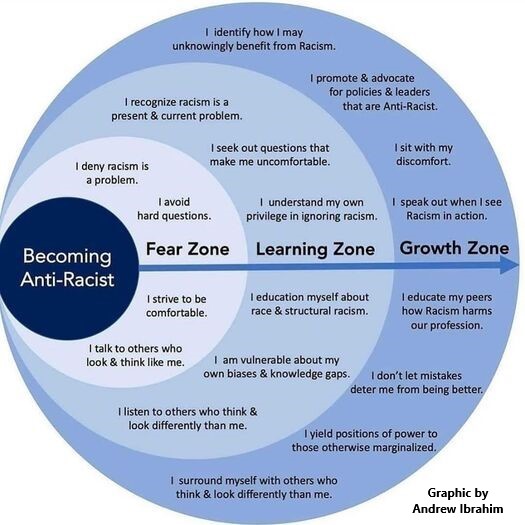Developing relationships, supporting students for an inclusive classroom
"What gives me hope is a simple truism. Once we lose hope, we are guaranteed to lose.
But if we ignore the odds and fight to create an antiracist world, then we give humanity
a chance to one day survive, a chance to live in communion, a chance to be forever
free."
--Ibram X. Kendi, How to be an Antiracist (2019)
--Ibram X. Kendi, How to be an Antiracist (2019)

Thousands of instructional resources addressing anti-racist curriculum and practices are accessible on the internet. Our workgroup combed through many of these resources and identified three that are informative, clearly organized, and applicable to the college classroom across academic disciplines. We hope you find these sources meaningful and practical.
- The Anti-Racist Discussion Pedagogy (PDF; from UNC, School of Public Health)
- Anti-Racist Curriculum Development Across the Disciplines (scroll down to access discipline specific information) (PDF; from American University, College of Arts & Sciences)
- The Difference between Being "Not Racist" and Antiracist, TED Talk by Ibram X.Kendi
- The 4 Connections (PDF)
“The beauty of anti-racism is that you don’t have to pretend to be free of racism
to be an anti-racist. Anti-racism is the commitment to fight racism wherever you find
it, including in yourself. And it’s the only way forward.”
--Ijeoma Oluo (author of So You Want to Talk about Race)
--Ijeoma Oluo (author of So You Want to Talk about Race)
Workshop Reflections:
- Jacquie Coe: Anti-Racist Pedagogy Reflection (PDF)
